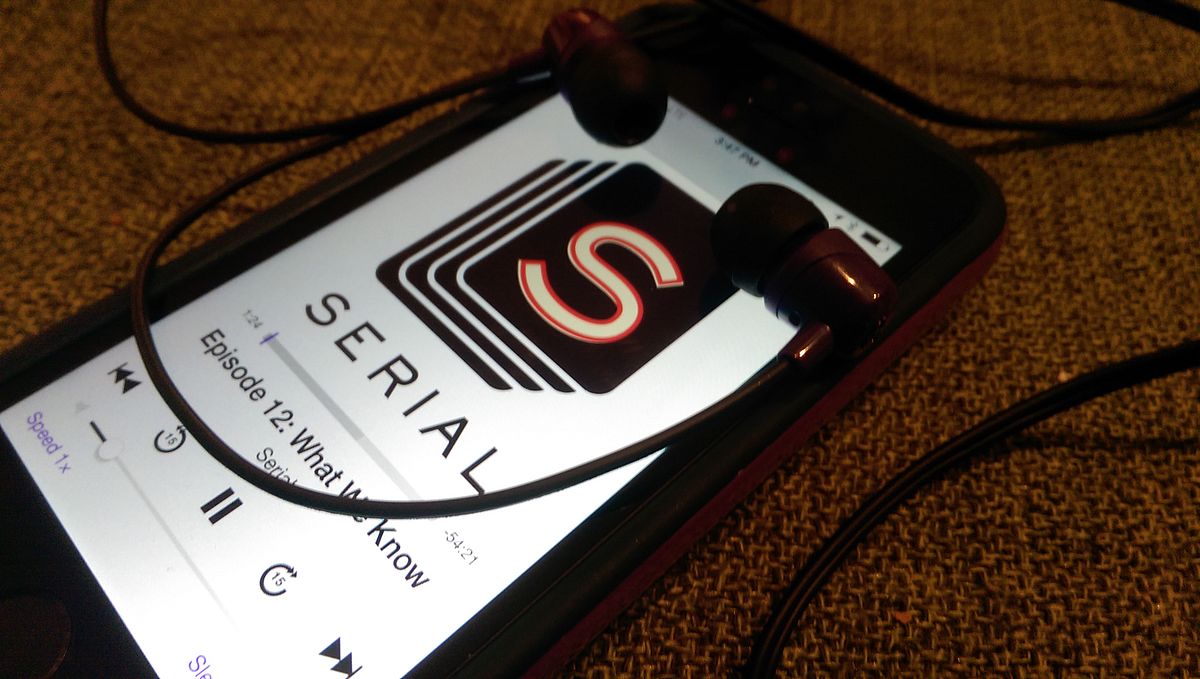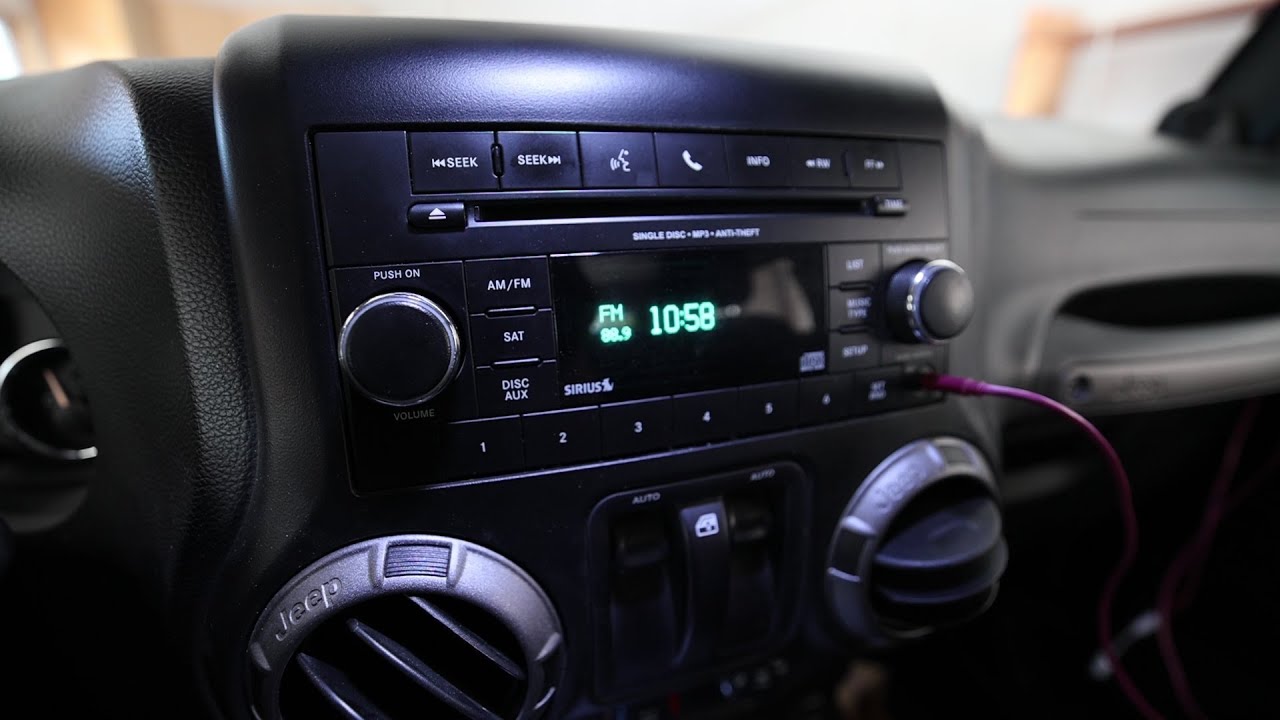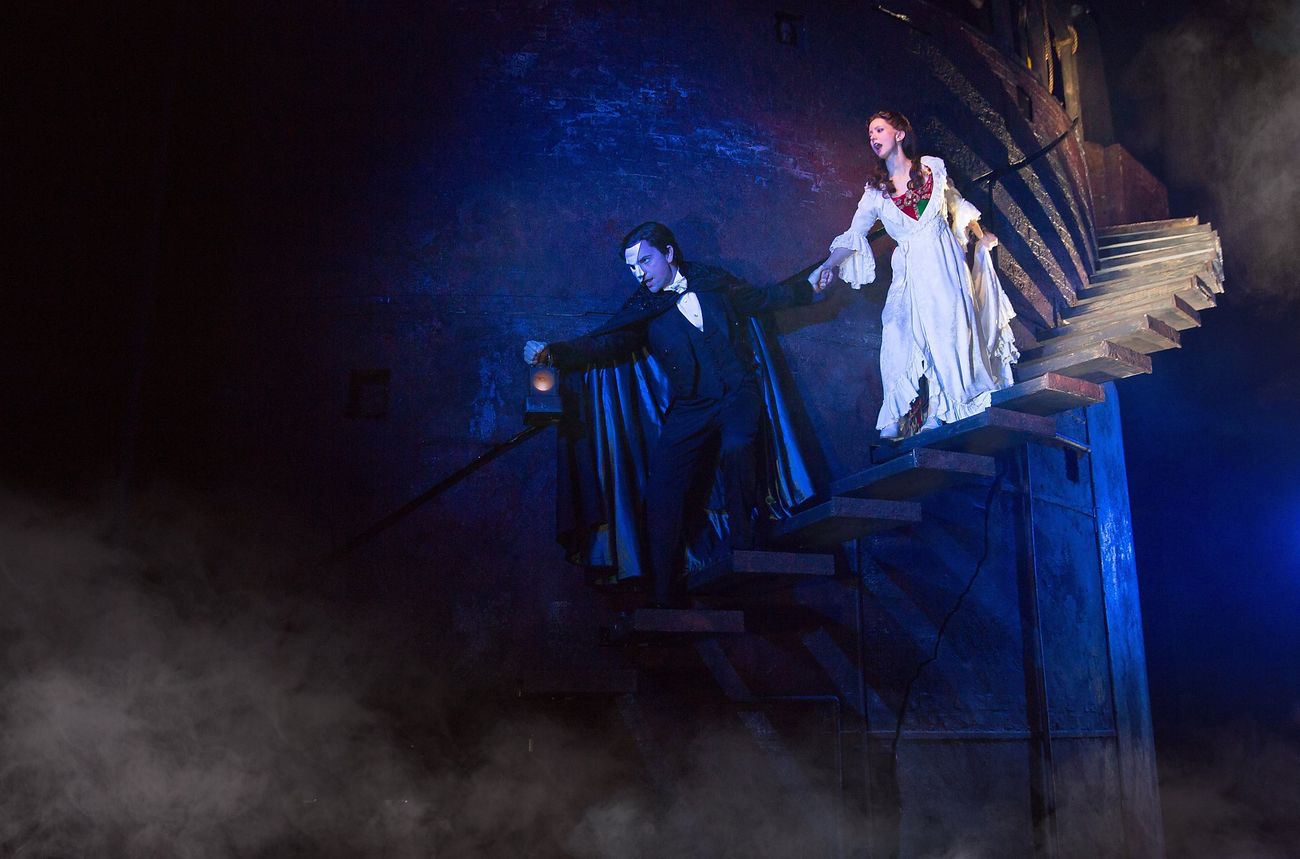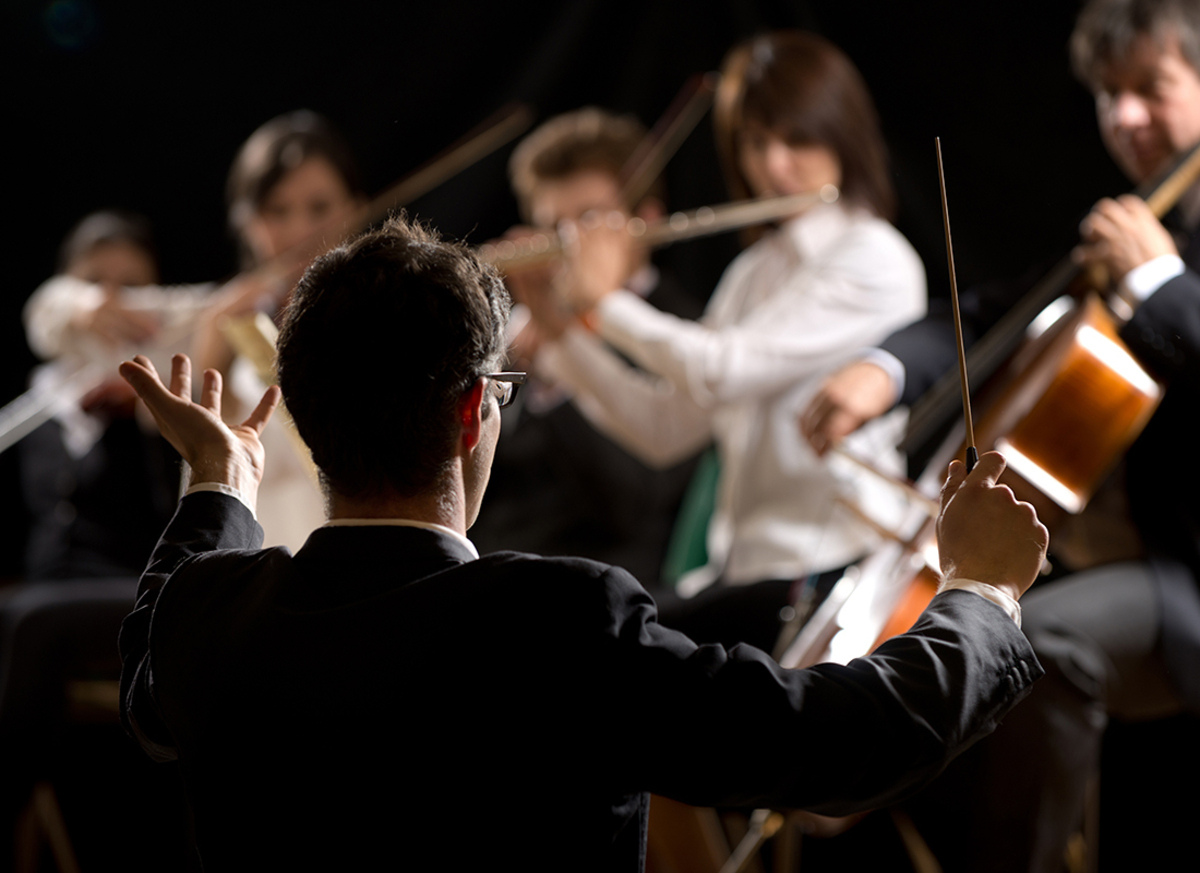Home>Devices & Equipment>Radio>When Did Radio Come Out
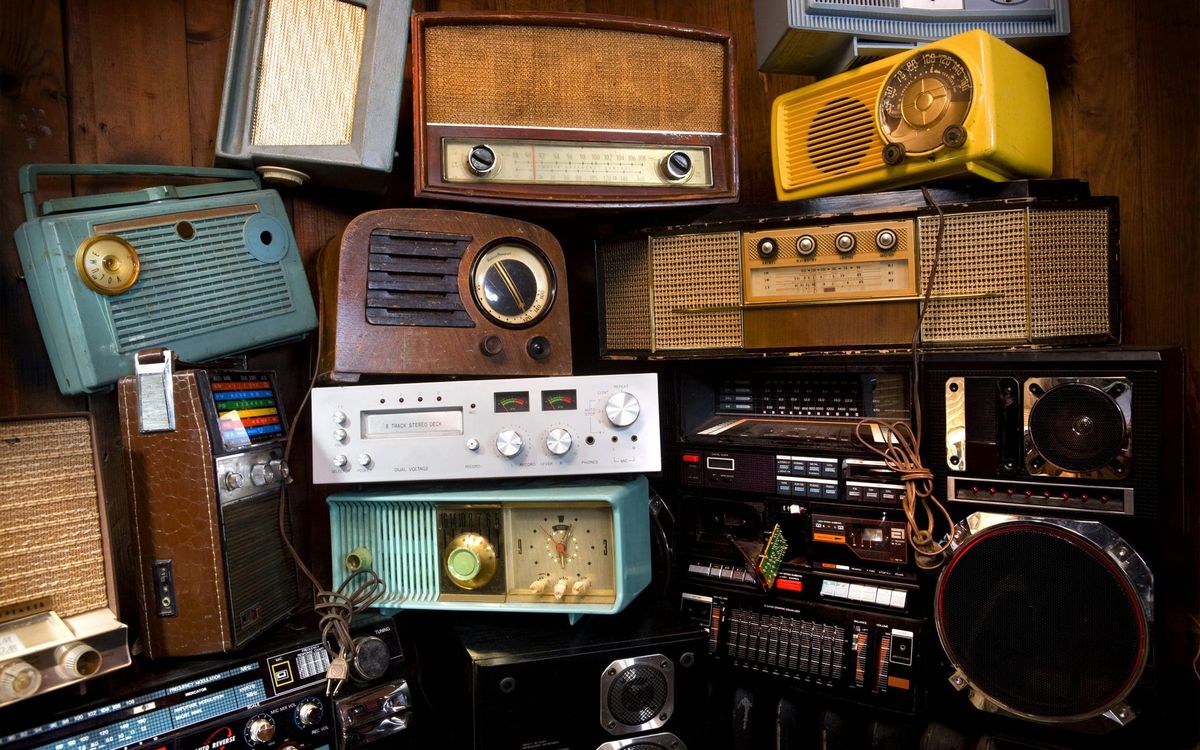

Radio
When Did Radio Come Out
Modified: January 22, 2024
Discover the history of radio and learn about its origins and evolution over the years. Explore how radio technology has shaped the way we communicate and entertain.
(Many of the links in this article redirect to a specific reviewed product. Your purchase of these products through affiliate links helps to generate commission for AudioLover.com, at no extra cost. Learn more)
Table of Contents
- Introduction
- The Invention of Radio
- Early Experiments with Wireless Telegraphy
- Invention of the Audion Tube
- Marconi and the First Transatlantic Radio Communication
- The Emergence of Broadcasting
- The Role of Radio in World War I
- The Development of Commercial Radio
- The Golden Age of Radio
- Radio’s Evolution in the Television Age
- Conclusion
Introduction
Radio is a medium that has been an integral part of our lives for over a century. It has played a significant role in shaping the way we communicate, entertain, and gather news and information. The invention of radio revolutionized the way people interacted and connected with one another, transcending geographical barriers and bringing the world closer together.
With its ability to transmit and receive sound through electromagnetic waves, radio quickly became a vital means of communication, especially in times of crisis and war. Over the years, radio has evolved and adapted to changing technologies, from the early experiments with wireless telegraphy to the emergence of broadcasting as a form of entertainment.
In this article, we will explore the fascinating history of radio and how it has evolved into the medium we know today. We will delve into the early experiments and inventions that paved the way for modern radio, delve into the pivotal moments in its history, and examine its impact on society and culture.
Join us as we take a journey back in time to uncover the origins of radio and its significance in our lives, and gain a deeper appreciation for this remarkable medium.
The Invention of Radio
The invention of radio can be attributed to several key figures who made groundbreaking discoveries and advancements in the field of wireless communication. One of the earliest pioneers was Nikola Tesla, a Serbian-American inventor, who conducted extensive experiments with wireless telegraphy in the late 19th century.
However, it was Guglielmo Marconi, an Italian inventor and engineer, who is widely recognized as the father of radio. In the late 1890s, Marconi developed a practical system for wireless telegraphy, which enabled the transmission of Morse code messages over long distances without the need for physical wires.
Marconi’s breakthrough came with the development of the radio transmitter and receiver, which utilized a series of antennas and electrical circuits to send and receive signals. He successfully demonstrated his system by transmitting a radio signal across the English Channel in 1899 and later achieved the first transatlantic radio communication in 1901.
Marconi’s invention sparked immense interest and further advancements in the field of radio. Other inventors and scientists, like Reginald Fessenden and Lee de Forest, made significant contributions to the development of radio technology, particularly through the invention of the audion tube.
The audion tube, also known as the triode, revolutionized radio broadcasting by enabling the amplification of signals. It played a crucial role in the commercialization and mass adoption of radio, as it allowed for the transmission of audio signals and the development of more powerful and efficient radio equipment.
With these groundbreaking inventions, the era of radio communication had begun. The early experiments and discoveries laid the foundation for the rapid growth and expansion of radio technology in the years to come. From this point on, radio would continue to evolve and transform the world of communication, entertainment, and information dissemination.
Early Experiments with Wireless Telegraphy
Before the invention of radio, there were several notable experiments and developments in the field of wireless telegraphy, which paved the way for the future of radio communication. One of the earliest pioneers in this field was Heinrich Hertz, a German physicist, who in the late 1880s, first demonstrated the existence of electromagnetic waves.
Hertz’s experiments with electromagnetic waves sparked the interest of other scientists and inventors, including Nikola Tesla and Guglielmo Marconi. Tesla, in particular, conducted extensive experiments with wireless power transmission and remote control using electromagnetic waves, which laid the groundwork for future radio technology.
Building upon Hertz’s discoveries, Marconi began experimenting with long-range wireless transmission. In 1895, he successfully sent a wireless signal over a distance of one and a half miles, using a simple but effective system of antennas and a coherer detector.
A coherer was a device that could detect and convert electromagnetic waves into electrical signals. It consisted of a glass tube filled with metal filings or other conducting material, which would become conductive when exposed to electromagnetic waves. When the waves were detected, the coherer would produce a click or spark, indicating the reception of a signal.
Marconi’s experiments with wireless telegraphy laid the foundation for the development of radio communication. He continued to refine his system, improving the range and reliability of wireless transmissions. In 1899, he transmitted a wireless signal across the English Channel, proving the practicality and potential of wireless communication over long distances.
These early experiments with wireless telegraphy demonstrated the effectiveness of using electromagnetic waves for communication purposes. They showcased the possibility of transmitting information without the need for physical wires, opening up a whole new realm of possibilities for future inventions.
While wireless telegraphy may not have been as sophisticated as modern radio, it was a crucial stepping stone in the evolution of radio technology. It laid the groundwork for the inventions and advancements that would follow, leading to the creation of radio as we know it today.
Invention of the Audion Tube
One of the most significant advancements in the field of radio communication was the invention of the audion tube, also known as the triode. This revolutionary device, invented by Lee de Forest in 1906, played a pivotal role in the development of radio broadcasting.
The audion tube was an improvement upon the earlier coherer and other early radio detectors. It was a vacuum tube that consisted of three elements: a heated filament, a positively charged plate, and a control grid in between. The flow of electrons from the filament to the plate was regulated by the voltage on the control grid, allowing for amplification of electrical signals.
This breakthrough invention by de Forest allowed for the amplification of weak radio signals, making it possible to transmit and receive audio signals rather than just Morse code. The audion tube enabled the development of more powerful and efficient radio equipment, greatly expanding the possibilities for radio broadcasting.
With the audion tube, broadcasters could now transmit not only simple telegraph messages but also voice and music. This opened up a new era of entertainment and information dissemination through radio. The ability to broadcast live performances, news, and educational programs had a profound impact on society and quickly captured the public’s attention.
Furthermore, the audion tube helped improve the overall quality and clarity of radio transmissions. By amplifying weak signals, it reduced the interference and static that were prevalent in earlier radio receivers. This enhanced the listening experience for audiences and contributed to the growing popularity of radio.
The invention of the audion tube brought about a fundamental shift in the possibilities and potential of radio communication. It transformed radio from a simple form of wireless telegraphy into a medium for mass communication and entertainment.
Lee de Forest’s invention of the audion tube was a game-changer in the world of radio. Its amplification capabilities revolutionized the broadcasting industry and set the stage for the rapid advancement of radio technology in the coming decades.
Marconi and the First Transatlantic Radio Communication
Guglielmo Marconi, often hailed as the father of radio, made a historic achievement in 1901 with the first successful transatlantic radio communication. This remarkable accomplishment marked a significant milestone in the development of long-distance wireless communication.
Marconi’s experiments with wireless telegraphy had already demonstrated the potential for long-range communication across land and sea. However, the transatlantic test was considered the ultimate challenge due to the vast distance and the presence of an expansive body of water.
Marconi set up a transmitting station in Poldhu, Cornwall, in the United Kingdom, and a receiving station in Signal Hill, St. John’s, Newfoundland, in Canada. These two stations were approximately 2,100 miles apart, making it the most ambitious radio transmission attempt at the time.
On December 12, 1901, Marconi successfully transmitted a three-letter Morse code signal, “S,” across the Atlantic Ocean. This signal was received at the Newfoundland station, confirming the feasibility of long-distance wireless communication.
The transatlantic transmission was a groundbreaking achievement that captured the attention of the world. It demonstrated the potential of radio as a means of global communication, as it could now connect continents in real-time.
Marconi’s success in the transatlantic test not only showcased his engineering prowess but also solidified his position as a pioneer in the field of radio. It sparked a wave of enthusiasm and interest in wireless communication, leading to further advancements and the commercialization of radio technology.
The first transatlantic radio communication laid the foundation for the development of global radio networks, enabling the exchange of information and ideas on an unprecedented scale. It brought people closer together across vast distances and contributed to the shrinking of the world.
Marconi’s achievement in transatlantic radio communication was a turning point in the history of radio. It demonstrated the immense capabilities of this new medium and paved the way for its future evolution as a powerful tool for communication and broadcasting.
The Emergence of Broadcasting
The invention of radio and the successful transmission of signals over long distances opened up new possibilities for communication. One of the most significant developments that emerged from the early days of radio was the concept of broadcasting.
Before broadcasting, radio communication was primarily point-to-point, meaning that messages were sent between specific transmitters and receivers. However, the idea of broadcasting involved transmitting signals to a wide audience, allowing multiple listeners to tune in and receive the same message simultaneously.
The first steps towards broadcasting were taken by amateur radio enthusiasts who began transmitting music and other audio content in addition to Morse code messages. These early radio pioneers realized the potential of reaching a broader audience and began experimenting with ways to extend the reach and variety of radio transmissions.
One such pioneer was Charles “Doc” Herrold, who is often credited with establishing the first-ever radio broadcasting station in San Jose, California, in 1909. Herrold started transmitting music and voice recordings to a select group of listeners, marking a significant shift towards radio as a form of entertainment.
As broadcasting grew in popularity, more stations were established, and radio sets became more accessible to the public. The demand for radio receivers increased, prompting manufacturers to produce affordable radios for households. This led to a surge in the number of listeners tuning in to radio programs.
With the emergence of broadcasting, the content transmitted over the airwaves diversified. Music performances, news updates, dramatic readings, and comedy sketches became regular features on radio programs. As more stations and networks were established, specialized shows catering to various interests and demographics emerged, offering a wide array of content for listeners to enjoy.
The development of broadcasting also led to the establishment of radio regulations and standards. Governments recognized the need to allocate frequencies and set guidelines to prevent interference between stations. In the United States, the Radio Act of 1927 was enacted to regulate and allocate radio frequencies, ensuring smooth operation and efficient use of the radio spectrum.
The emergence of broadcasting revolutionized the radio industry and solidified radio’s position as a powerful medium for mass communication. It brought entertainment, information, and cultural experiences directly into people’s homes, connecting them to the world beyond their immediate surroundings.
Today, broadcasting continues to thrive and evolve with digital platforms and internet streaming, offering an even wider range of content and accessibility. The legacy of broadcasting in radio remains a testament to the power of this medium to entertain, inform, and unite communities.
The Role of Radio in World War I
Radio played a crucial role in World War I, serving as a vital tool for communication, espionage, and propaganda. The war marked a turning point in the development and utilization of radio technology, as nations recognized its strategic value and employed it extensively on the battlefield and in the home front.
At the outbreak of the war, radio was still a relatively new technology. However, its potential was quickly recognized by military leaders who saw it as a means to enhance communication with troops and coordinate operations. Radio transmitters and receivers were deployed in war zones, enabling real-time communication between commanders and frontline forces. This improved the efficiency of military operations and facilitated rapid decision-making.
Wireless telegraphy, a precursor to radio, was also used for espionage during the war. Both sides intercepted enemy radio transmissions, attempting to decipher codes and gather intelligence. Radiotelegraphy provided a means for covert communication between spies and intelligence operatives, contributing to the clandestine nature of wartime operations.
Radio broadcasting, though still in its infancy, was employed for propaganda purposes during World War I. Governments recognized the power of radio to disseminate information and shape public opinion. Radio broadcasts were used to rally support for the war effort, deliver news and updates, and broadcast messages to enemy soldiers and civilians alike.
The role of radio in providing entertainment and morale-boosting also cannot be understated. Soldiers in the trenches could listen to music, sports commentary, and humorous shows, offering a brief respite from the harsh realities of war. Radio became a valuable source of mental escape and unity for troops deployed far from home.
World War I was a catalyst for the rapid advancement of radio technology. The increased demands and requirements of wartime communication spurred innovations in wireless telegraphy and radio equipment. After the war, the knowledge and expertise gained during this period laid the foundation for further developments in the field of radio.
The significance of radio during World War I extended beyond the wartime period. Its impact on communication and the dissemination of information laid the groundwork for the transformation of radio from a military tool to a medium for mass communication and entertainment.
Overall, radio played a pivotal role in World War I, revolutionizing communication, intelligence gathering, and propaganda efforts. Its strategic importance during the conflict propelled the advancement and widespread adoption of radio technology, forever changing the way communication is conducted in times of war and peace.
The Development of Commercial Radio
After the end of World War I, radio technology rapidly advanced and began to transition from a predominantly military and experimental tool to a medium for commercial use. The development of commercial radio would revolutionize the way people consumed entertainment, news, and information, and pave the way for the modern broadcasting industry.
In the early 1920s, governments began to issue broadcast licenses to individuals and organizations, opening up opportunities for private ownership and operation of radio stations. This marked the birth of commercial radio, as entrepreneurs and investors recognized the potential for this new medium.
The first commercial radio stations started to emerge, initially focusing on providing entertainment to the growing number of radio owners. These stations aired live music performances, comedy sketches, and variety shows, which quickly became popular among listeners. Advertisers also recognized the reach and influence of commercial radio and began to sponsor and advertise their products on these programs.
One of the major milestones in the development of commercial radio was the establishment of the National Broadcasting Company (NBC) in the United States in 1926. NBC became the first national radio network, effectively connecting numerous local stations and pooling resources for programming and advertising. This allowed for the distribution of content to a much wider audience and laid the groundwork for the modern network broadcasting system.
With the growth of commercial radio, programming became more diverse and specialized. Stations began to cater to specific interests and demographics, offering news, sports, educational programs, and more. This shift in programming led to the emergence of radio personalities and famous radio shows, with hosts and entertainers becoming household names.
The development of commercial radio also spurred innovations in radio technology and broadcasting equipment. Efforts were made to improve signal quality, expand coverage, and increase the power and range of radio transmissions. This led to the design of better receivers and the establishment of regional and national networks to ensure wider accessibility to radio programming.
Advertising played a significant role in the growth and sustainability of commercial radio. As companies recognized the potential reach and impact of radio, they invested in advertisements and sponsorships to promote their products and services. Radio emerged as an effective medium for reaching a mass audience, leading to the rise of radio advertising agencies and the creation of catchy jingles and slogans.
The development of commercial radio transformed the broadcasting landscape and revolutionized the way people consumed media. It provided a new platform for advertisers to reach consumers, brought news and entertainment into people’s homes, and created a sense of shared community and culture across vast distances.
Today, commercial radio remains a vital part of the media landscape, with an array of stations and formats catering to diverse interests and preferences. Its continued evolution and adaptation to new technologies ensure that radio remains a relevant and influential medium in our modern society.
The Golden Age of Radio
The Golden Age of Radio, spanning roughly from the 1920s to the 1950s, was a remarkable period in the history of broadcasting. It was a time when radio became the dominant form of entertainment and information dissemination, captivating millions of listeners across the globe.
During this era, radio programming reached its peak in terms of creativity, diversity, and audience engagement. It was a time of innovation, as broadcasters and content creators explored the possibilities of this new medium and pushed the boundaries of storytelling and entertainment.
One of the defining features of the Golden Age of Radio was the emergence of serialized dramas and variety shows. Radio plays, such as “The War of the Worlds” and “The Shadow,” captivated listeners with their engaging narratives and immersive sound effects. These programs allowed people to experience thrilling and imaginative stories in the comfort of their own homes.
Variety shows became immensely popular, featuring a mix of music, comedy sketches, and interviews with notable personalities. Shows like “The Jack Benny Program” and “The Abbott and Costello Show” became cultural phenomenons, showcasing the comedic talents of their hosts and attracting millions of loyal listeners.
News and informative programs also played a crucial role during this era. Radio became a trusted source of information, keeping the public informed about current events, politics, and social issues. Programs like “The March of Time” and “Edward R. Murrow’s Reports from London” provided in-depth reporting and analysis, shaping public opinion and offering a window into the world outside.
The Golden Age of Radio also saw the rise of iconic radio personalities and their distinct voices. Hosts like Orson Welles, Jack Benny, and Amos ‘n’ Andy became household names, captivating audiences with their unique styles and performances. These personalities helped forge a deep connection between listeners and the medium, elevating radio to the forefront of popular culture.
Advertisers also embraced the potential of radio during this period. Sponsored content and advertisements became an integral part of radio programming, as companies sought to leverage the medium’s reach and influence. Jingles, catchy slogans, and product endorsements became iconic elements of the radio experience, further cementing its place in the daily lives of listeners.
The Golden Age of Radio eventually gave way to the rise of television in the 1950s, as the visual medium offered a new level of entertainment and engagement. However, the legacy of radio during this era remains significant. It laid the foundation for modern broadcasting, with its innovative storytelling, diverse programming, and deep connection with audiences.
Today, the influence of the Golden Age of Radio can still be felt in the world of entertainment. It serves as a reminder of the power of audio storytelling and the unique experiences that radio offers. The Golden Age of Radio left a lasting impact on the medium, leaving behind a rich archive of unforgettable moments and experiences that continue to inspire and entertain.
Radio’s Evolution in the Television Age
The advent of television in the mid-20th century had a significant impact on the radio industry, shaping its evolution and transforming the way people consumed media. The rise of television presented new challenges and opportunities for radio, leading to shifts in programming, audience demographics, and technological advancements.
As television became more widespread and accessible, radio faced increasing competition for listeners and advertisers. Many feared that television would render radio obsolete, as people turned to the visual medium for their entertainment and information needs.
In response to this changing landscape, radio adapted and repositioned itself to find its own place in the media ecosystem. It shifted its focus to target specific audience niches that television couldn’t fully cater to. Radio programming became more specialized, with stations offering formats such as talk radio, sports, music genres, and news/talk formats.
Radio also evolved by capitalizing on its advantages over television. It remained a companion medium, providing on-the-go and easily accessible content for people in their cars, at work, or at home. Radio stations pioneered the concept of drive-time programming, delivering news updates, music, and engaging talk shows during peak commuting hours.
Technological advancements played a crucial role in radio’s evolution during the television age. FM radio, with its improved sound quality, emerged as a preferred format for music and more high-fidelity audio content. AM radio, on the other hand, focused on news, talk shows, and sports broadcasting.
Radio also embraced new technologies, such as transistor radios and portable receivers, which allowed listeners to tune in to their favorite programs on the go. These portable devices enabled people to take radio with them wherever they went and helped maintain radio’s role as a ubiquitous medium.
The television age also marked the rise of Top 40 format on radio. Stations began playing the most popular songs across various genres, keeping up with the rapidly changing music landscape. This format, combined with engaging radio personalities and interactive listener requests, helped radio maintain its relevancy and appeal to younger audiences.
Despite the competition from television, radio remained a vital source of local news and community-centered programming. Local radio stations continued to cater to the needs and interests of their specific regions, providing a sense of connection and identity for listeners.
In the digital age, radio has continued to adapt and evolve. The emergence of internet radio and podcasting has expanded the reach and accessibility of radio content, offering on-demand streaming and a diverse selection of programming.
Today, radio remains a relevant and vibrant medium, with a dedicated audience and a wide range of formats and platforms. It continues to foster a sense of community, deliver breaking news, offer entertainment, and provide a unique listening experience that complements other media forms.
The evolution of radio in the television age demonstrates its resilience and ability to adapt to changing technologies and consumer preferences. It proves that radio is a medium that continually reinvents itself, finding new ways to connect with listeners and remain an essential part of their everyday lives.
Conclusion
Radio has come a long way since its humble beginnings, evolving into a powerful medium that has shaped the way we communicate, entertain, and gather information. From its invention to the present day, radio has continuously adapted to changing technologies and societal needs, leaving an indelible mark on our culture.
The invention of radio by pioneers like Guglielmo Marconi and the development of the audion tube by Lee de Forest set the stage for the rapid growth and expansion of radio technology. The ability to transmit and receive messages wirelessly revolutionized communication, breaking down barriers and connecting people across long distances.
Radio’s emergence as a medium for entertainment and information during the Golden Age brought about a new era of creativity and innovation. Serialized dramas, variety shows, and influential radio personalities captivated audiences and united communities, making radio an integral part of daily life.
The impact of radio was felt on a global scale, evidenced by its role in times of conflict. During World War I, radio played a vital role in military communication and espionage, while providing a source of news and entertainment to soldiers and civilians alike.
As television rose to prominence, radio faced new challenges and underwent a transformation. It found its place in the media landscape by specializing its programming, embracing new technologies, and focusing on its inherent strengths such as portability and immediacy.
Today, radio continues to thrive in the digital age. It remains a trusted source for news, a platform for exploration and discovery, and a companion for listeners worldwide. With the advent of internet radio and podcasting, radio has expanded its reach and become even more accessible to a diverse audience.
Throughout its rich history, radio has proven its resilience and adaptability. Its ability to evolve with the times while retaining its core essence has ensured its enduring relevance in the face of new media technologies and platforms.
So, whether it’s tuning in to your favorite station on your morning commute, listening to a podcast during a workout, or hearing breaking news as it happens, radio continues to serve as a steadfast companion, keeping us informed, entertained, and connected.
In conclusion, the journey of radio from its invention to its evolution as a mass medium has been a remarkable one. With its unique ability to engage and entertain, radio holds a special place in our hearts and will continue to shape our lives for generations to come.

